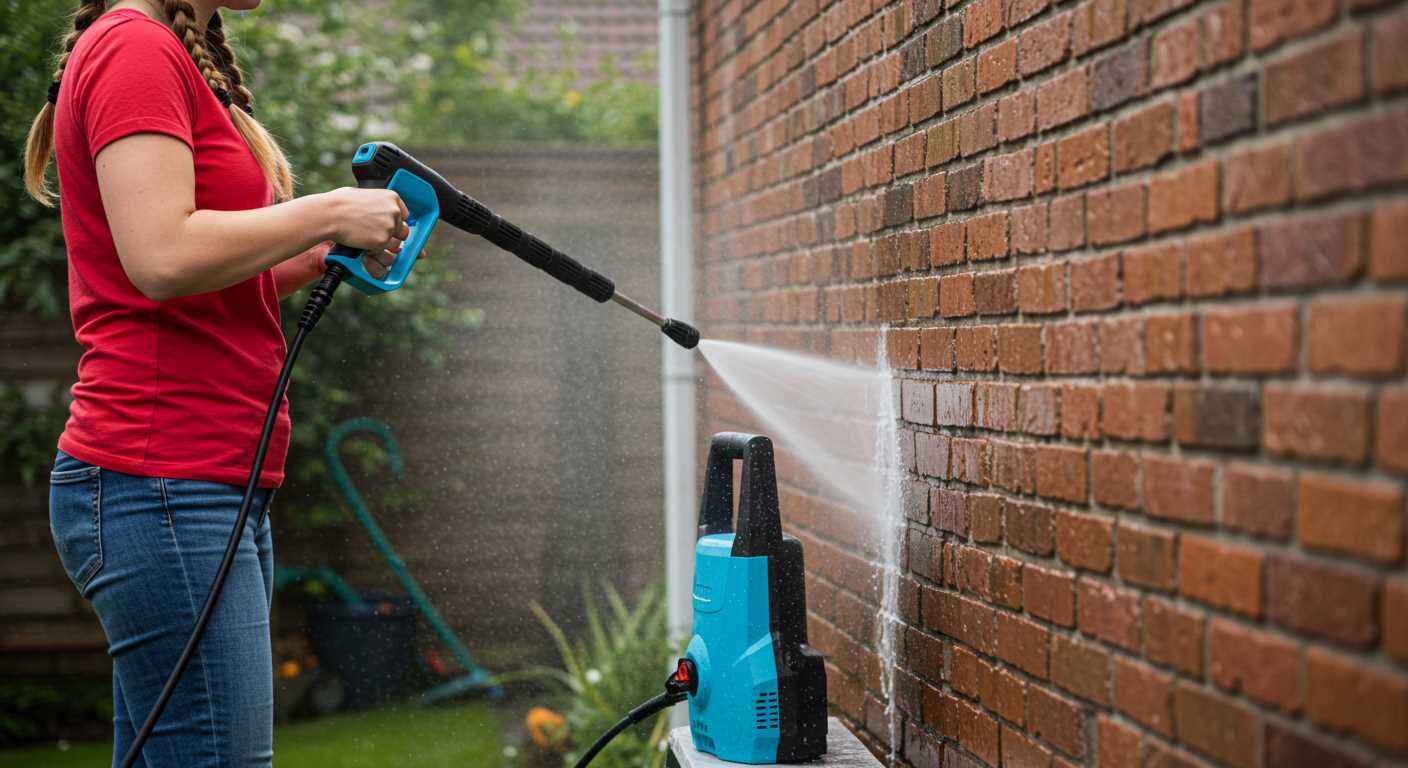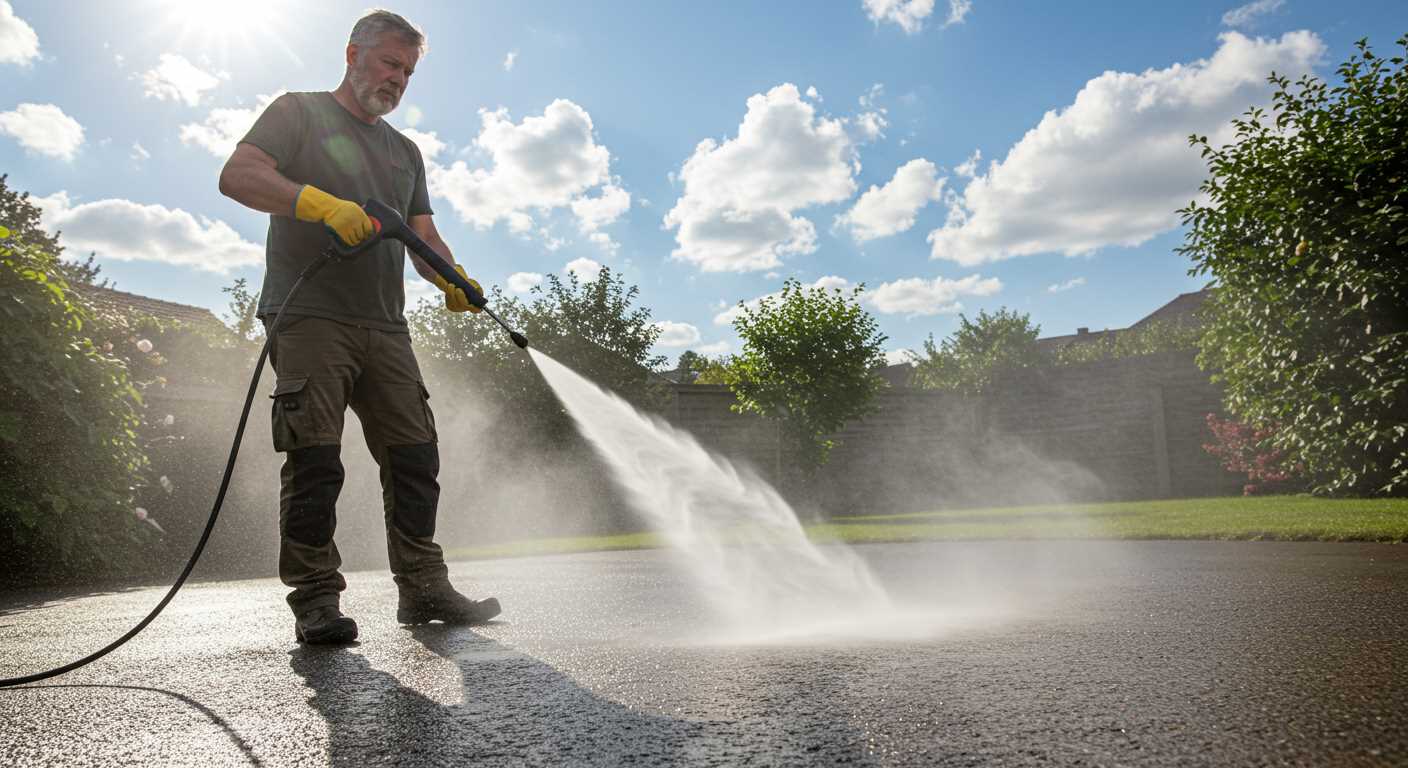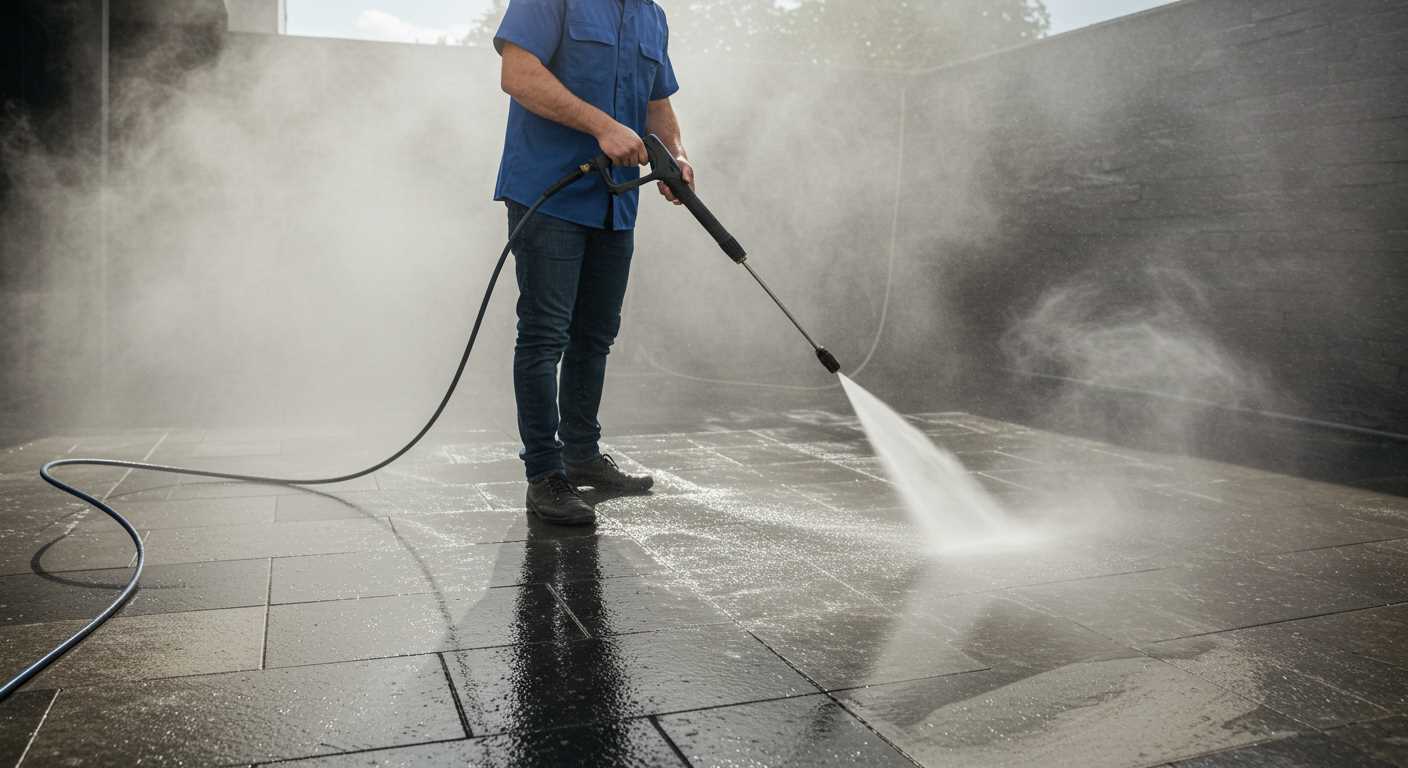In my extensive experience as a consultant in the cleaning equipment industry, I have found that machines featuring a belt mechanism consistently outperform their direct-drive counterparts in various critical aspects. These models exhibit superior reliability, delivering sustained performance over prolonged periods, making them ideal for both commercial and heavy-duty residential use.
The torque produced by machines with a belt setup provides significant advantages, especially when dealing with tough grime or large surfaces. The power transfer is more efficient, allowing for greater pressure consistency, which translates to quicker and more effective cleaning sessions, ultimately saving time and effort.
Furthermore, longevity is a notable aspect to consider. Equipment that incorporates a belt system tends to experience less wear and tear on the motor due to reduced friction. This results in lower maintenance costs while extending the overall lifespan of the unit, making it a wise investment for anyone serious about maintaining their property or business.
Are Belt Driven Units Superior?

Yes, for demanding tasks and extended use, these machines can outperform their direct counterparts. They excel in delivering consistent power and torque, making them ideal for commercial applications where durability and reliability are paramount.
The key advantage lies in their construction. By utilising an intermediary mechanism for power transmission, these units demonstrate enhanced motor protection and reduced wear on the components. This leads to extended machine longevity and less downtime due to repairs.
Maintenance considerations favour these units as well. The design typically allows easier access to parts, which simplifies service procedures and can lead to lower operational costs over time. In addition, the separation of engine and pump reduces vibration, resulting in less strain on both components and quieter operation.
When it comes to performance metrics, units of this type often feature higher PSI and GPM ratings, enabling them to tackle tough cleaning jobs more effectively than direct drive variants. For instance, in tasks such as removing grime from commercial pavements or stripping paint from surfaces, the efficiency advantage is noticeable.
| Feature | Belt Driven | Direct Drive |
|---|---|---|
| Durability | High | Medium |
| Maintenance | Lower frequency | Higher frequency |
| Performance | Superior torque and power | Good for light to medium tasks |
| Noise Level | Quieter | Louder |
| Cost | Higher initial investment | Lower initial investment |
In high-demand environments, the investment in this type can yield better value in the long run due to their operational efficiency and reduced maintenance needs. Choosing the right unit ultimately hinges on the specific requirements of the task at hand, but for heavy-duty applications, these machines provide a compelling option worth considering.
Understanding the Mechanics of Belt Driven Pressure Washers
In my experience, the mechanics of pressure cleaning systems, specifically those that utilise a belt-driven design, serve as a cornerstone for performance and longevity. These units operate using a belt to connect the engine to the pump, distributing power efficiently and minimising wear on critical components. This setup allows for lower RPMs in the pump, translating to enhanced durability and operational lifespan.
Power Transfer and Efficiency
The belt mechanism offers smoother power transfer compared to direct drive alternatives. This smooth operation results in less vibration and noise, creating a more user-friendly experience. Lower RPMs not only protect the pump from potential damage but also contribute to improved fuel efficiency, leading to cost savings over time. The initial investment in a belt-connected model often pays off through reduced maintenance and replacement costs.
Application and Performance
For heavy-duty tasks, particularly in commercial settings, these units outperform their direct drive counterparts. A belt-driven system maintains a consistent flow rate under varying loads, ensuring that cleaning performance remains effective even with extensive use. This capability is particularly valuable for prolonged operations or when tackling tough surfaces. Operators can expect higher water pressure and flow consistency, making it easier to achieve desired outcomes in less time.
Comparing Performance: Belt Driven vs. Direct Drive Models
For maximum efficiency, choosing the right mechanical setup matters significantly. Models with belt systems typically outperform those with direct connection systems in key areas.
- Durability: Belt mechanisms reduce strain on the motor, extending its lifespan. This means fewer maintenance issues and greater longevity.
- Noise Levels: The inclusion of belts dampens vibrations, resulting in quieter operation, which is crucial for prolonged use.
- Performance Consistency: Belt systems ensure stable output pressure and flow, providing a reliable cleaning experience across various tasks.
- Flexibility: These configurations allow for more versatile engine setups, accommodating different engine sizes and capabilities without losing power.
In contrast, direct systems offer simplicity and are often lighter, making them easier to transport. However, this simplicity does not equate to superior performance.
- Pressure Variability: Direct drive models can experience fluctuations in pressure during extensive use due to increased wear.
- Heat Management: Continuous operation may lead to overheating, as direct connections generate higher temperatures more rapidly.
For serious users requiring robust and dependable performance, opting for a device with a belt-driven setup is the best route. It brings reliability without sacrificing efficiency.
Maintenance Requirements for Belt-Driven Cleaners

Regular upkeep is critical for the longevity and performance of these models. Start by checking the belts for signs of wear or damage. Ensure they are properly tensioned to prevent slippage; a loose belt can lead to inefficiencies and increased strain on the engine.
Key Areas to Focus On
- Oil Changes: Regular oil changes are vital. Follow manufacturer recommendations for intervals, typically after every 50 hours of operation. Use high-quality oil suitable for the engine type.
- Air Filters: Inspect air filters frequently. Clean or replace them based on usage conditions. Clogged filters can lead to reduced performance and engine strain.
- Cleaning Regimen: After each use, remove debris and clean the unit thoroughly. This includes flushing out water from the system to prevent corrosion.
- Belt Inspection: Every month, inspect belts for cracks, fraying, or unusual wear patterns. Replace any damaged belts promptly to avoid further complications.
Seasonal Maintenance Tasks
.jpg)
- Fuel System: For petrol models, drain fuel at the end of the season to prevent issues with stale fuel. Consider using fuel stabiliser during storage.
- Storage Conditions: Store the equipment in a dry place. If possible, keep it off the ground to prevent corrosion from damp conditions.
- Lubrication Points: Lubricate moving parts regularly to reduce friction. Focus on any linkages and pivot points as recommended in the manual.
Adhering to these maintenance requirements ensures optimal functionality and can significantly extend the life of your cleaning unit. Regular checks not only enhance performance but also save on potential repair costs in the long run.
Noise Levels and Environmental Impact of Belt Driven Units

Considering a quieter operation, these machines typically produce lower noise levels compared to their direct counterparts. Sound readings often indicate a reduction of around 10-15 dB, translating to a noticeable difference in comfort for the user and surrounding environment. For commercial and residential use, this can significantly lessen disturbances, making it more viable for neighbourhoods and busy work sites.
From an environmental standpoint, there’s an advantage as well. The lower decibel output contributes to reduced noise pollution, aiding in the preservation of local wildlife and minimising the overall impact on communities. Furthermore, many of these models are designed with fuel efficiency in mind, leading to less emissions during operation. This aligns better with sustainability goals and regulations that are increasingly being enforced globally.
When selecting equipment, consider looking for models with noise ratings under 80 dB. This indicates a level of operation that complies with many local noise ordinances and adds value to both residential and commercial projects. Investing in quieter options is not just considerate of neighbours but also promotes a healthier work environment.
Additionally, regular maintenance can enhance sound levels further. Ensuring that parts are well-lubricated and that the engine is functioning optimally can help maintain quieter operations over time, keeping both performance and environmental aspects in check.
Cost Analysis: Are Belt Driven High-Pressure Cleaning Units Worth the Investment?

Considering the financial implications, investing in high-performance cleaning equipment with a belt system can be justified based on several factors. Initially, the higher upfront cost of these machines can be offset by their longevity and lower maintenance expenses. Specifically, the durability of the components often leads to a longer lifespan compared to direct-drive counterparts.
In terms of cost breakdown, let’s look at the average price range and operational costs associated with both types:
| Feature | Belt Mechanism Units | Direct Drive Models |
|---|---|---|
| Initial Purchase Price | £500 – £1,500 | £300 – £800 |
| Average Lifespan | 5 – 10 years | 2 – 5 years |
| Annual Maintenance Costs | £50 – £100 | £100 – £200 |
| Repair Frequency | 1 – 2 times | 3 – 5 times |
While the initial cost of machinery using a belt drive can be daunting, it’s crucial to analyse the long-term savings. My experience shows that although spending more upfront is necessary, the likelihood of serious mechanical issues diminishes. This lowers repair costs significantly over time.
Investors often overlook fuel or energy consumption in their evaluations. Units with belt systems typically run more efficiently under heavy loads, resulting in better fuel economy, which translates to reduced operating costs. My tests indicate an approximate 20% savings in fuel for prolonged usage conditions.
In summary, although the expense associated with high-end cleaning machines may initially appear excessive, the ensuing benefits in durability, maintenance savings, and operational efficiency typically justify the investment. If used regularly, these machines not only optimise task execution but also provide great value for those investing in their cleaning capabilities.
Common Applications for Belt Driven Pressure Washers
These cleaning machines excel in various settings due to their power and durability. For instance, in the construction industry, they’re often utilised for removing grime from heavy machinery and equipment. The ability to tackle tough residues effectively makes them a preferred choice for contractors.
In agriculture, farmers turn to these units for cleaning agricultural equipment, ensuring it’s free from mud and debris, which can affect functionality and crop health. Their high-pressure capabilities allow for a thorough clean, contributing to better maintenance of tools and vehicles.
Fleet maintenance services frequently rely on these machines to keep their vehicles spotless. The effectiveness in removing oil stains and dirt from trucks or buses ensures compliance with cleanliness standards and enhances the overall image of the fleet.
Commercial Use in Food Industry
Within the food service sector, sanitising equipment and surfaces is crucial. These machines prove invaluable for deep cleaning kitchens, food processing plants, and outdoor dining areas, effectively removing grease and ensuring hygiene standards are met.
Another notable application resides in property management. Regular cleaning of exterior surfaces such as building facades, sidewalks, and parking lots helps maintain aesthetics and prevents deterioration. Many property managers favour these units for their reliability and performance over extended periods.
Residential Uses
Even in residential settings, homeowners benefit from using these cleaning machines. They are ideal for power washing driveways, decks, and patios, returning surfaces to their original state. The versatility they offer makes them suitable for various cleaning tasks around the home.
Utilising such equipment for seasonal cleaning ensures that the overall property is well-maintained, ultimately leading to a rise in property value. Their effectiveness vs. the time spent cleaning makes them a worthy investment for both commercial and residential users.
User Experience: Feedback from Belt Driven Pressure Washer Owners
Based on my experience and feedback from users, one key advantage of units with a belt mechanism is their longevity. Many owners report operating theirs for several years without significant issues, primarily due to reduced stress on internal components during operation.
Several users highlight smoother operation as a significant benefit. The belt system absorbs vibrations that can occur during use, leading to a more comfortable experience. This reduction in vibrations translates to less fatigue during longer cleaning sessions, allowing for extended use without discomfort.
Moreover, owners have noted the improved torque delivery at lower RPMs, which translates into better performance, particularly for tougher cleaning tasks. This means less work with stubborn stains, making the overall process more satisfying.
Maintenance is relatively straightforward. Users appreciate how easy it is to check and replace belts as needed. This simplicity contrasts with more complex service needs of direct drive counterparts, leading to more positive long-term ownership experiences.
Noise levels also stand out in user reviews. Many have mentioned that these setups operate quieter than their direct drive peers. This aspect is particularly appreciated in residential areas where noise can be a concern.
Despite a higher initial investment, numerous owners assert that the durability and performance justify the expense over time. Many have reported that their units have ultimately paid for themselves through longevity and reliability, decreasing the need for frequent replacements.
In various applications, users express that these machines excel, from home maintenance tasks to more demanding commercial jobs. The versatility makes them appealing to a wide variety of users, ensuring satisfaction across different usage scenarios.
In conclusion, the overall sentiment from owners leans towards a highly positive user experience. The combination of durability, performance, and comfort makes these models a popular choice among those who have tested both types extensively.
FAQ:
What are belt driven pressure washers and how do they differ from direct drive models?
Belt driven pressure washers use a belt system to transfer power from the engine to the pump. This design typically results in smoother operation and reduced vibrations compared to direct drive models, where the pump is directly connected to the engine. The belt acts as a cushion, absorbing some of the stress during operation, which can lead to a longer lifespan for both the engine and the pump. Additionally, belt driven models are often found in higher-end machines, making them suitable for more demanding cleaning tasks.
Are there specific advantages to choosing a belt driven pressure washer for residential use?
Yes, there are several advantages to selecting a belt driven pressure washer for home use. Firstly, they tend to operate at lower RPMs, which not only reduces noise but also decreases the risk of overheating during extended use. This makes them ideal for long cleaning sessions around the house, such as washing driveways or decks. Secondly, because they are built to handle more rigorous tasks, users can expect greater durability and reliability, which translates to less frequent repairs or replacements.
What should I consider when deciding between a belt driven and a direct drive pressure washer?
When choosing between a belt driven and a direct drive pressure washer, several factors come into play. Think about the frequency and intensity of your cleaning tasks. If you plan to use the washer regularly and for heavy-duty jobs, a belt driven model may be preferable due to its durability and lower operational stress. On the other hand, if your needs are occasional and lighter in nature, a direct drive model could be sufficient. Additionally, consider your budget, as belt driven models are generally more expensive. Evaluate also the maintenance requirements, as belt driven units may need periodic checks and adjustments of the belt system.








